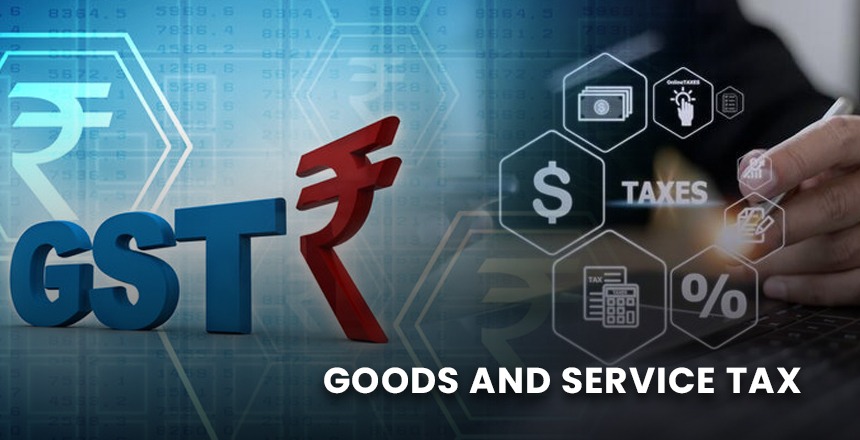GST has been implemented in India as a tax reform on July 1, 2017. It removed and replaced all indirect taxes with a simple, singular form. Streamlining tax, compliance as well as ease of doing business became its aim. GST is said to be a destination-based tax. If consumed in one place, that will be taxed in a place- that is, where the goods or services are consumed, not where they are produced. That is how India transforms its taxation systems. Reduced tax cascading and increasing transparency have made the economy better.
Understanding GST
Basically, GST is a multi-stage, two-tiered, value-adding type of tax, which means that it gets applied every time an additional value is added from the point of output to the last consumer. In other words, it is applied at every stage of the supply chain, from the manufacturer to the end consumer. The tax, however, will eventually be borne by the consumer. Meanwhile, businesses act only as intermediaries in collecting this tax from the consumer and pay it to the government.Components of GST.
GST in India consists of three main components:
- The Central Goods and Services Tax (CGST) is collected by the Central Government on intra-state sales.
- The State Goods and Services Tax (SGST) is imposed on intra-state sales and collected by the State Governments.
- Integrated Goods and Services Tax (IGST) is levied and collected by the Central Government on inter-state sale and imports.
Advantages of GST:
1. Removal of Cascading Taxation
Before implementation of GST, there were taxes imposed at various levels, leading to the taxation of taxes. However GST took away this cascading effect as the system provided for input tax credit whereby taxes are charged only on value addition
2. Simplicity of the Tax System
GST replaced several indirect taxes such as VAT, service tax, central excise duty, and octroi with a single tax system. This has made it easier for businesses to comply and eliminated a lot of complexities associated with it.
3. Economic Stimulus
GST rendered taxation more efficient, thereby boosting foreign investment, improving the conditions of doing business, and improving the revenue collection for the government
4. Increased Transparency and Compliance
To comply with GST, it requires suitable accounting and timely submission of returns by all businesses. Introduction of electronic invoicing and digital compliance mechanisms has diminished tax evasion to a great extent and added to the transparency.
5. Enhanced Tax Collection and Revenue Growth
GST not only widens the tax base but also enhances its compliance for increased tax revenue for both the central and state governments.
GST Tax Slabs
GST in India has various tax slabs for different kinds of goods and services:
- 0%- For essential goods such as fresh vegetables, milk, and certain healthcare services.
- 5%- Basic necessities like packaged food items and public transport services.
- 12%- Processed food items, textiles, and intermediate goods.
- 18%- Most goods and services including consumer electronics and restaurant services.
- 28%- Luxury items such as cars, tobacco products, and aerated beverage
Challenges in implementing GST
However, the introduction of GST was not without its equal challenges, including:
Complex Compliance Requirements: Such compliance under GST is generally challenging for small businesses as the compliance becomes cumbersome with multiple returns and the need to maintain digital records.
- ompliance becomes cumbersome with multiple returns and the need to maintain digital records.
- Technical Snags: The portal has had some glitches from time to time, making it accessible to taxpayers for convenience.
- Frequent Changes in Policy: Frequently, changes in the rules leave these SMEs confused in keeping pace with what is being implemented.
- Higher Tax Rate for Certain Goods: Some basic items and services are still available at much higher taxes. Consumers do not like such things.
- Recent Developments in GST: Steps taken by Government to Overcome Various Challenges:
- E-invoicing introduction: For seamless input tax credit claims and reducing fraudulent transactions.
- Rationalization of GST rates: Periodic changes in rates of tax to prop up economic growth vis-a-vis revenue collection.
- Decreased Compliance: Number of GST returns reduced for small businesses and introduction to composition schemes.
Impact of GST on Different Divisions:
1. Manufacturing Sector
Reduced Logistics cost Benefits to Manufacturing sector by elimination of inter-state tax barriers, increased efficiency and excess productivity
2. Service Contribution
Increased uniformity by GST compliance burden to service providers operating in different states.
3. Ecommerce Business
Tax collection at source (TCS) is now a requirement for ecommerce businesses, leading to a higher degree of tax compliance, but at the same time, also causing additional operational issues.
4. Real Estate Sector
Although different taxes accumulated into a single-one tax subsumed, GST proved the reduced tax burden of the house buyers to make the transactions much more open in real estate.
Conclusion
It is the introduction of GST, which has been hailed as the most transformative reform in India’s tax structure. There have been various positive aspects: elimination of cascading tax, simplification in compliance, and increasing its transparency. However, some challenges like complications in compliance with possible technical problems need to be worked out before any further improvement should be made. With its continuous refinements and improved execution, GST will soon become the most awaited change factor in the economy of India, creating a more business-friendly environment for the people of this country.








